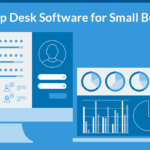Software testing is a critical phase in the software development lifecycle (SDLC). It ensures that applications function as intended, meet user requirements, and are free from defects. With the growing complexity of software systems, utilizing the right testing tools and following best practices is essential for delivering high-quality software. This article explores various software testing tools, their categories, and the best practices that can enhance the testing process.

Understanding Software Testing
Software testing involves evaluating and verifying that a software application or system meets specified requirements and works as intended. It helps identify bugs and issues before the software is released to users, thereby improving quality and performance.
Types of Software Testing
- Functional Testing: Validates the software against functional requirements.
- Non-Functional Testing: Assesses performance, usability, reliability, and security.
- Manual Testing: Involves human testers executing test cases without automation.
- Automated Testing: Uses scripts and software tools to execute tests automatically.
- Regression Testing: Ensures that new code changes do not adversely affect existing functionality.
- Performance Testing: Evaluates the speed, scalability, and stability of the application under load.
Software Testing Tools
Choosing the right testing tools can significantly enhance the efficiency and effectiveness of the testing process. Below are various categories of software testing tools, along with popular examples in each category.
1. Test Automation Tools
Test automation tools allow testers to automate repetitive testing tasks, saving time and effort.
- Selenium: An open-source framework for automating web applications across different browsers and platforms. It supports various programming languages, including Java, C#, and Python.
- Appium: A widely-used automation tool for mobile applications. It supports both Android and iOS platforms and allows testing across native, hybrid, and mobile web apps.
- TestComplete: A commercial test automation tool that supports desktop, web, and mobile applications. It offers a user-friendly interface and supports keyword-driven testing.
2. Performance Testing Tools
Performance testing tools help assess the responsiveness, stability, and scalability of applications under load.
- Apache JMeter: An open-source tool designed for load testing and performance measurement of web applications. It can simulate multiple users and analyze performance metrics.
- LoadRunner: A comprehensive performance testing tool by Micro Focus that supports a wide range of applications and protocols. It offers advanced features for load testing and performance analysis.
- Gatling: An open-source performance testing tool that allows developers to simulate heavy load on web applications. It is designed for ease of use with a user-friendly DSL (Domain Specific Language).
3. Bug Tracking and Test Management Tools
These tools help manage test cases, track defects, and facilitate collaboration among testing teams.
- JIRA: A popular issue and project tracking tool that integrates with various testing frameworks. It helps teams manage bugs, test cases, and requirements in a centralized manner.
- TestRail: A test case management tool that provides a comprehensive platform for managing test plans, test cases, and test runs. It offers integration with bug tracking and automation tools.
- Bugzilla: An open-source bug tracking system that allows teams to track defects and manage issues efficiently. It supports customizable workflows and reporting features.
4. Continuous Integration/Continuous Deployment (CI/CD) Tools
CI/CD tools automate the software build, testing, and deployment process, enabling faster delivery and improved quality.
- Jenkins: An open-source automation server that supports building, testing, and deploying applications. It integrates with various testing tools to facilitate continuous testing.
- CircleCI: A cloud-based CI/CD platform that automates the software development process, allowing teams to build, test, and deploy applications quickly.
- GitLab CI: A built-in CI/CD feature of GitLab that allows for automated testing and deployment directly from the repository.
5. Security Testing Tools
Security testing tools help identify vulnerabilities and security risks in applications.
- OWASP ZAP: An open-source security testing tool that helps find security vulnerabilities in web applications. It provides automated scanners and various tools to assist in manual testing.
- Burp Suite: A popular web application security testing tool that offers features for scanning, crawling, and analyzing web application security.
- Nessus: A vulnerability scanning tool that helps identify security vulnerabilities in systems and applications. It provides comprehensive reports and remediation guidance.
Best Practices for Software Testing
Implementing best practices in software testing can enhance the quality of the testing process and improve overall software quality. Here are some essential best practices to consider:
1. Define Clear Testing Objectives
Before starting testing, establish clear objectives and goals. Identify what needs to be tested, the acceptance criteria, and the expected outcomes. This clarity will guide the testing process and ensure alignment with project goals.
2. Develop a Comprehensive Test Plan
A well-structured test plan outlines the testing strategy, scope, resources, schedule, and deliverables. It serves as a roadmap for the testing process and helps keep the team focused on achieving the objectives.
3. Embrace Test Automation
Automating repetitive and time-consuming tests can significantly improve efficiency and accuracy. Identify the tests that are suitable for automation and select appropriate tools to implement automated testing.
4. Implement Continuous Testing
Incorporate testing into the CI/CD pipeline to facilitate continuous testing. This approach allows for early detection of defects and ensures that code changes do not introduce new issues.
5. Prioritize Testing Based on Risk
Focus testing efforts on high-risk areas of the application, such as critical features or components that have undergone significant changes. Conduct thorough testing on these areas to mitigate potential risks.
6. Foster Collaboration Among Teams
Encourage collaboration between development, testing, and operations teams. Effective communication and collaboration help identify issues early and streamline the testing process.
7. Utilize Test Case Management
Organize and manage test cases effectively to ensure thorough coverage and traceability. Use test case management tools to document, execute, and track test cases systematically.
8. Perform Regular Regression Testing
Regularly conduct regression testing to ensure that new code changes do not impact existing functionality. This practice helps maintain software quality throughout the development lifecycle.
9. Analyze Test Results and Metrics
After testing, analyze the results and gather metrics to evaluate the effectiveness of the testing process. Use this information to identify areas for improvement and make data-driven decisions.
10. Continuously Improve Testing Practices
Regularly review and refine testing practices based on feedback and lessons learned from previous projects. Continuous improvement ensures that testing processes remain effective and relevant.
Conclusion
Software testing is a vital aspect of the software development lifecycle that ensures the delivery of high-quality applications. Utilizing the right testing tools and implementing best practices can significantly enhance the efficiency and effectiveness of the testing process. By prioritizing testing and adopting a proactive approach, organizations can improve software quality, reduce defects, and enhance customer satisfaction.
As technology continues to evolve, staying updated on the latest testing tools and best practices will be essential for successful software development and digital transformation. By investing in robust testing strategies, organizations can build reliable, secure, and high-performing software that meets user expectations and business objectives.



















